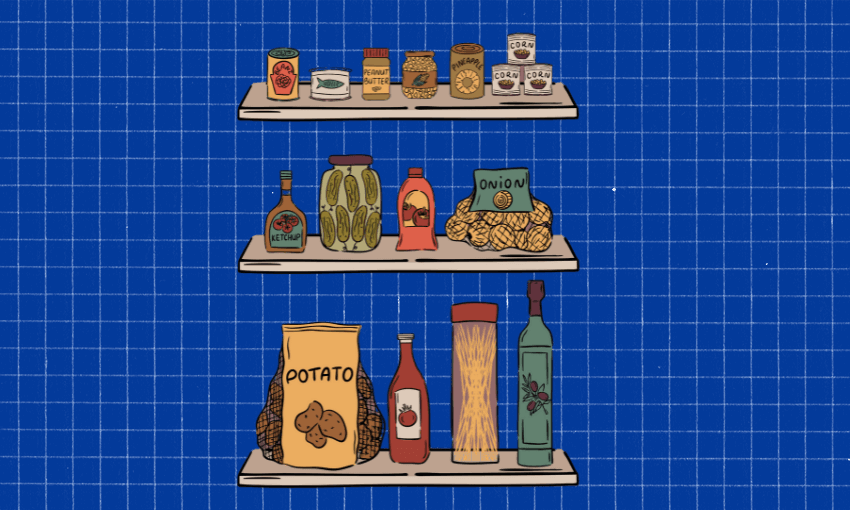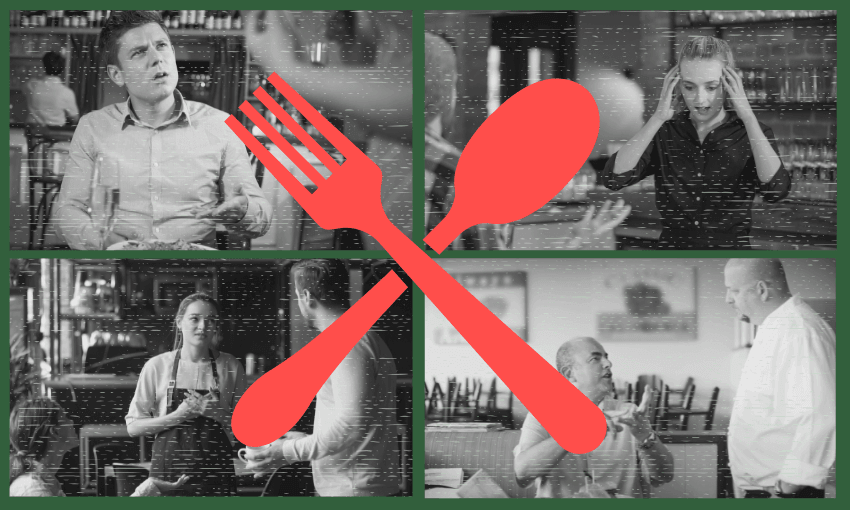Keeping your pantry (and fridge and freezer) stocked with some solid staples will save you that last-minute trip to the supermarket – and save you money, too.
One question I get asked all the time on Instagram, where I share cheap and realistic recipes as @alicetayloreats, is what’s in your pantry? So here it is. This is my baseline. These are the foods I always have on hand, and they’re the foundation for almost everything I cook.
It’s simple: if you have a solid staple pantry, you will save money.
Start with your base: carbs
First things first, find your base. For me, that means three carbs I keep stocked at all times: long-grain rice, pasta and sliced bread, which I keep in the freezer so it lasts longer. These are my everyday staples. I buy them in bulk or grab them when they’re on special. If I don’t have at least one of these ready to go, I feel completely off track. Potatoes also deserve an honourable mention here.
The savoury cabinet
This is where the flavour begins. I keep things simple. I always have one plain cooking oil, usually canola or sunflower, and one bottle of olive oil. Olive oil is non-negotiable in our house, since I live with an Albanian Italian man. I tend to skip butter most of the time because, to be honest, it’s expensive.
There are a few tins I always have in the cupboard: chopped tomatoes, tomato paste and coconut cream. I also make sure I have soy sauce and one nut butter, usually peanut or almond depending on what’s on sale.
When it comes to spices, I’m really not a fan of pre-made spice mixes. They’re mostly just salt and come at a high price. Instead, I stick to a few basic but versatile staples: curry powder, paprika, and one dried green herb. My choice is thyme. That’s really all I need to build flavour.
Baking basics
If you enjoy baking, you don’t need a huge collection of ingredients. I always have one kind of flour, usually plain, one sugar, baking powder and baking soda. Everything else can be adapted depending on what you’re making and what’s in season.
The freezer
My freezer is one of the hardest-working parts of my kitchen. I always keep homemade chicken stock (you can find the recipe on my Instagram), frozen mince, bone-in chicken pieces and some kind of frozen vegetables. With these on hand, I can throw together soups, stews or stir-fries without needing to run to the shops.
The fridge
The only things I really rely on keeping in the fridge are milk and yoghurt. Yoghurt is one of my secret weapons. I use it with or on almost everything. A little bowl of rice, some veges, a fried egg and a spoonful of yoghurt with chilli oil is absolute heaven to me.
Decoration, not limitation
Once your base pantry is set up, you can get creative. If I want to make a stew, I’ll see what’s on special. Maybe it’s chicken, maybe it’s chuck steak, or maybe it’s just a bunch of delicious root vegetables. If I feel like baking, I’ll check if chocolate is on sale. If it’s not, maybe apples are in season instead. I try to stay flexible and open-minded when I’m shopping.
Final thought: keep an open mind
One of the biggest things that has helped me save money is not running to the supermarket the moment I feel like I’ve run out of food. More often than not, I haven’t. I’ve just got some tired green veg – great, that turns into soup. Or maybe there are a few sausages left – perfect, that can become a stew. Try to use what you already have. Not every meal needs to be a culinary masterpiece, no matter what social media might suggest. Simple food, cooked with love, is more than enough.
Alice’s pantry essentials
Carbs
Long-grain rice ♦ pasta ♦ sliced bread (stored in the freezer)
Cooking oils and condiments
Plain oil (canola or sunflower) ♦ olive oil ♦ soy sauce ♦ nut butter ♦ tomato paste ♦ tinned tomatoes ♦ coconut cream
Spices and seasoning
Curry powder ♦ paprika ♦ dried thyme (or your preferred herb) ♦ salt and pepper
Baking
Plain flour ♦ sugar ♦ baking powder ♦ baking soda
Fridge
Milk ♦ yoghurt
Freezer
Homemade chicken stock ♦ frozen mince ♦ frozen bone-in chicken ♦ frozen mixed vegetables ♦ sliced bread






